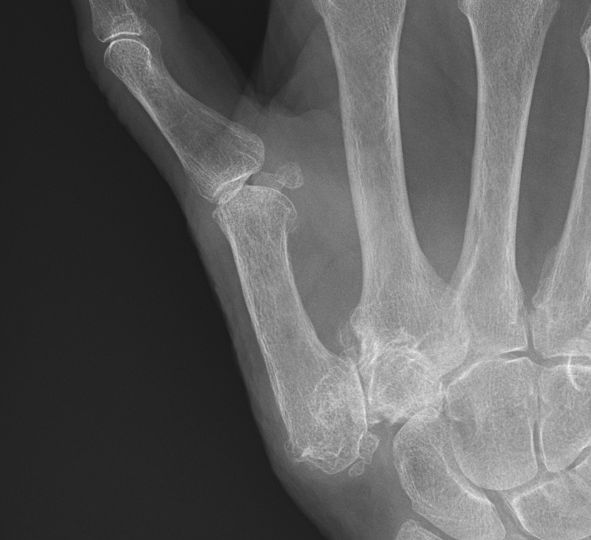
Flexor tendon injuries refer to deep cuts in the muscles that bend your fingers (the titular flexor tendons). Complications from these can range from severe pain and tenderness to a reduced ability to bend or use your fingers.
They’re also extremely common, taking place anywhere from the kitchen to the construction site and beyond. Tendon laceration with a sharp or irregular cutting tool can take place in dozens of different ways. And surgeries to correct the issue are extremely difficult.
As the second part of our two-part series on flexor tendon injuries, today we’ll be taking a closer look at scar formation and specific flexor tendon repair solutions.
Scar Formation
The healing process following a flexor tendon injury depends largely on scar formation in the injured area.
The formation of these scars is a double edged sword for flexor tendon injury sufferers. Part of this scarring process actually serves to help the tendon ends mend, and is actually very beneficial to healing. Doctors hope for this during the healing process.
There is an unfortunate byproduct of this process, however. Scar formation, while helping tendon ends mend, may also glue the tendon to the surrounding tendon sheath in the process. This is extremely undesirable. With more of this kind of scar formation at work, the outcome of the surgery becomes limited. The patient may experience stiffness, limited motion, and loss of dexterity and strength!
When undesirable scar formation severely limits finger motion, the surgeon may recommend a release of that scar through a surgical process called tenolysis. The surgeon revisits the surgical site and frees the healed tendon from the surrounding scar to free the tendon to glide without getting stuck.
A tenolysis is much easier said than done, however. It requires a lot of effort from the patient, surgeon and rehabilitation professional to get right.
Flexor Tendon Repair Solutions:
A surgeon repairing a lacerated tendon today is as likely to succeed or fail as a surgeon 50 years ago! The minimal amount of technological advancement in the field is actually quite surprising. If we compare it to the field of coronary artery disease, where implanting a stent in an outpatient minimally invasive procedure has replaced open heart surgery in many instances, we understand that flexor tendon repair is really lagging behind.
TOBY is the leader in flexor tendon repair, worldwide! We have developed tools that help surgeons face the challenges of tendon repair.
With TOBY Flexor Tendon Repair Tools, surgeons can actually perform a primary repair rather than a reconstruction, even on injuries older than three weeks! (See the section “Complications From Flexor Tendon Injuries” in our previous article for more on the significance of this).
In fact some surgeons have succeeded in primary repair where the tendon lesion is as old as three months. That means that TOBY Flexor Tendon Repair Tools can save patients from repeating surgeries and minimize rehabilitation from six down to three months. That is truly remarkable.
The cost of the disposable tools can prevent a very costly re-operation, as well as expensive rehabilitations and even more costly time out and suffering for the patient! In this day and age of cost containment in health care, investing a little in the right tools helps to save thousands in additional cost and suffering.
TOBY Flexor Tendon Repair Tools provide the only means of successfully enlarging a shrunken tendon sheath. They are also the only way to successfully slip a swollen tendon back into its sheath. There are no tools like the TOBY Tools set on the market. With more than fifteen-thousand surgeries performed by surgeons, all based on word-of-mouth referrals, this is a revolution in the industry.
Minimize frustration during surgical repair, efficiently use valuable surgical time, and mitigate patient exposure. TOBY Flexor Tendon Repair Tools minimize additional unintended injuries inflicted by surgeons on patients while figuring out how to get tendons back in place for repair, as well! As with any repair job, the proper tools are invaluable at the critical time of surgery.
Makeshift tools or adaptations are short-term solutions for Flexor Tendon Injuries, simply keeping the surgeon above water but not performing at their maximum level. Ask your surgeon about solutions from TOBY, today!
For the first part of this article series, check out: Flexor Tendon Injuries and Associated Complications.

